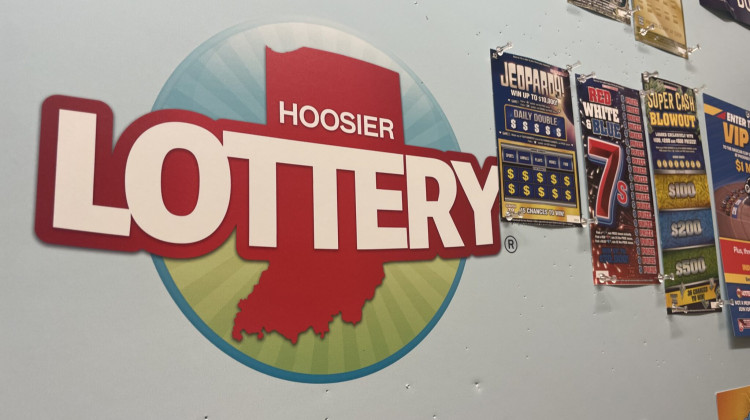
Erin Bishay puts a tag on a white pine tree at Abell Nursery and Landscape in Bloomington. White pine trees can be used as living Christmas trees and are native to Indiana.
Rebecca Thiele/IPB NewsThere’s long been debate over which is better for the planet — a plastic Christmas tree or a freshly cut one. But there’s a third option that’s more sustainable than both. Living Christmas trees can be planted outside after the holiday is over — but they’re a long-term commitment that’s not for everyone.
Erin Bishay manages the garden center at Abell Nursery and Landscape in Bloomington — which sells fresh cut and living trees. She said for the price of a tall fresh cut tree that only lasts one season, you can buy a five or six foot living tree that will last decades.
Bishay said it’s a family tradition for many of their customers.
“And they have 10, 15, 20 trees in a row that they're able to see them grow and change throughout their property through time," she said.
Like all trees, they also help cool the planet by providing shade and absorbing carbon dioxide.
Living trees require some effort, however. Kyle Daniel is a nursery and landscaping specialist with Purdue University. He said quick changes in temperature can damage a living tree. So depending on the weather and species of tree, you should only have it inside for about three to five days — plus a few days in the garage before and after being indoors to help it adjust.
Then, you need to find a good place to plant it. Daniel said most conifers need an area with full sun.
“Most of them cannot tolerate wet feet. So make sure that where you put it is not a low area, doesn't hold a lot of water," he said.
Join the conversation and sign up for the Indiana Two-Way. Text "Indiana" to 73224. Your comments and questions in response to our weekly text help us find the answers you need on statewide issues, including this series on climate change and solutions.
You also have to make sure it’s not too close to your home or power lines.
To care for and plant a living Christmas tree, follow these steps:
1. Find out what evergreen tree and shrub varieties your local nurseries and Christmas tree farms offer. White pine, northern white cedar, eastern red cedar, yew (T. canadensis species), eastern hemlock and common juniper are native to Indiana. White (Concolor) fir, Douglas fir, Norway spruce, Serbian spruce, false cypress and dwarf alberta spruce are non-native but should grow well in the state. According to the Indiana Invasive Species Council, they’re not invasive.
2. Research how big the trees on offer will get — this will determine how far the tree should be planted from homes and power lines as well as how big the hole for the tree should be. White pine can grow up to 100 feet tall, whereas a dwarf alberta spruce can grow up to about 13-15 feet tall.
3. Find a spot for your tree and dig a hole as soon as possible. If the ground freezes before you’ve dug a hole, you’ll be unable to plant the tree. Choose a sunny spot where the soil doesn’t stay moist — avoid low spots in the yard.
4. If the temperature outside is in the low 30s or colder, put your living Christmas tree into a garage or shed for a day to help it adjust to the temperature inside your home.
5. Enjoy your tree inside your home for about three to no more than five days. Water it enough to keep the root ball moist, but don’t allow standing water around the tree as you would with a fresh cut tree.
6. Repeat step 4.
7. Plant your tree in your pre-dug hole using amended soil from a nursery or garden center. Follow the watering instructions from the location where you bought the tree. Bishay recommends putting a ring of mulch around the tree to help it retain moisture.
Rebecca is our energy and environment reporter. Contact her at rthiele@iu.edu or follow her on Twitter at @beckythiele.
 DONATE
DONATE






 Support WFYI. We can't do it without you.
Support WFYI. We can't do it without you.